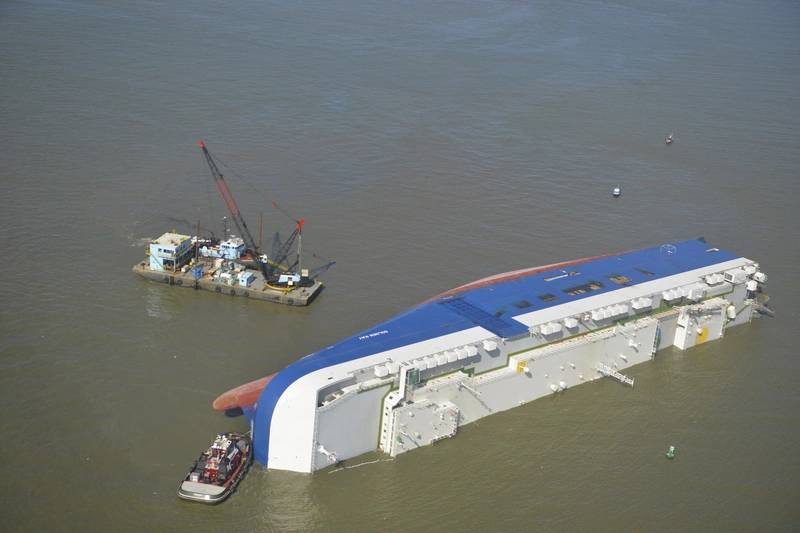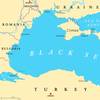Golden Ray: Lightering of Fuel Completed
The a unified command team has completed the oil pumping of all accessible tanks from the M/V Golden Ray, a roll-on, roll-off car carrier that overturned near the Port of Brunswick in Georgia in September, the U.S. Coast Guard said.
Salvage workers and divers gained access to 26 fuel tanks inside the Golden Ray, some of which were submerged and could only be reached by rappelling and conducting dive operations inside the wreck. Fuel was pumped from the tanks into a barge for proper disposal. The interior of the tanks were then washed with steam to remove residual fuel, which was collected and transferred into containers. More than 320,000 gallons of oil and water mixture were removed.
“The removal of fuel from the vessel has significantly reduced the remaining threat to the environment,” said Jed Hewitt from Georgia Department of Natural Resources, Environmental Protection Division.
The St. Simons Sound Incident Response Unified Command continues the forensic investigation to determine an accurate volume of fuel onboard at the time of the incident and the amount discharged into the environment, the Coast Guard said.
 MV Golden Ray lies on it's port side after capsizing inside the St. Simons Sound near Brunswick, Georgia, September 16, 2019. (U.S. Coast Guard photo by Paige Hause)
MV Golden Ray lies on it's port side after capsizing inside the St. Simons Sound near Brunswick, Georgia, September 16, 2019. (U.S. Coast Guard photo by Paige Hause)
Commander Matt Baer, U.S. Coast Guard, said, “The completion of the fuel removal allows the Unified Command to move on to our ultimate goal of safely removing the wreck of the Golden Ray. Removal of the vessel will be a highly complex and challenging operation.”
To improve the stability of the wreck, responders have begun the removal of the vessel’s propeller, propeller shaft and rudder, which weighs a total of approximately 130 tons.
“Due to the vessel’s orientation on its side, these components are creating a load which the vessel was not designed to support. Imagine holding a milk jug with an outstretched arm compared to the same weight hanging at your side. Removing these components will help reduce the stresses on the hull,” said Chief Warrant Officer Jeremiah Winston, Unified Command Salvage Branch director. “This operation will help sustain the integrity of the wreck while we prepare for its full removal.”
Plans for the construction of an environmental protection barrier and the full removal of the wreck continue to be evaluated, the Coast Guard said.
The cause of the incident is under investigation.












